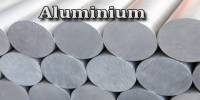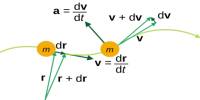Certain materials lose their electrical resistance at low temperatures and conduct electricity without loss. The phenomena of superconductivity has been recognized since 1911, however, it remains a mystery.
That’s a shame because discovering a material with superconducting qualities even at high temperatures would almost certainly spark a technological revolution.
A charge passes through a material without resistance, which is known as superconductivity. While metals are the most common superconducting materials, there are a few notable outliers.
A recent discovery at TU Wien (Vienna) could be a significant step forward in this direction: A group of solid-state physicists investigated an odd substance comprised of ytterbium, rhodium, and silicon, dubbed “strange metal.”
Electrical resistance and temperature have an interesting connection in strange metals. This association may be found in a wide temperature range in this material, and the underlying process is well understood.
It has now been discovered that this material is also a superconductor and that superconductivity is intimately linked to odd metal behavior, contrary to earlier notions. This could also be the key to understanding superconductivity in other kinds of materials at high temperatures.

Researchers have been pushing the temperature limits of how low a superconducting material must get to function in recent years. The current record holder is a sulphur-hydrogen combination that can carry electricity safely at a somewhat warm 203 Kelvin temperature (-70 degrees Celsius or -94 Fahrenheit). The only catch is that it can only form at 1.5 million atmospheres of pressure.
Strange metal: the linear relationship between resistance and temperature
Electrical resistance increases with the square of temperature in typical metals at low temperatures. However, the situation is completely different in some high-temperature superconductors: at low temperatures, below the so-called superconducting transition temperature, they show no electrical resistance at all, and above this temperature, the resistance increases linearly rather than quadratically with temperature. This is how “strange metals” are defined.
Theoretical considerations have already been put forward to justify why superconductivity is simply not possible here. Nevertheless, we decided to take another look at this material.
Silke Bühler-Paschen
“It has therefore already been suspected in recent years that this linear relationship between resistance and temperature is of great importance for superconductivity,” says Prof. Silke Bühler-Paschen, who heads the research area “Quantum Materials” at the Institute of Solid State Physics at TU Wien. “But unfortunately, until now we didn’t know of a suitable material to study this in great depth.”
The linear relationship between temperature and resistance in high-temperature superconductors is normally only measurable over a short temperature range, and numerous phenomena that unavoidably occur at higher temperatures can impact this relationship in complicated ways.
Many studies have already been conducted using an exotic material (YbRh2Si2) that exhibits odd metal behavior throughout a large temperature range, but no superconductivity was observed in this extreme “strange metal” state.
“Theoretical considerations have already been put forward to justify why superconductivity is simply not possible here,” says Silke Bühler-Paschen. “Nevertheless, we decided to take another look at this material.”
Record-breaking temperatures
At TU Wien, a particularly powerful low-temperature laboratory is available. “There we can study materials under more extreme conditions than other research groups have been able to do so far,” explains Silke Bühler-Paschen.
The team first demonstrated that the linear relationship between resistance and temperature in YbRh2Si2 exists over a wider temperature range than previously thought, and then made the crucial discovery: the strange metal transforms into a superconductor at extremely low temperatures of only one millikelvin.
“This makes our material ideally suited for finding out in what way the strange metal behavior leads to superconductivity,” says Silke Bühler-Paschen.
Surprisingly, the material’s ability to investigate high-temperature superconductivity is enhanced by the fact that it only becomes superconducting at extremely low temperatures:
“The mechanisms that lead to superconductivity are visible particularly well at these extremely low temperatures because they are not overlaid by other effects in this regime. In our material, this is the localization of some of the conduction electrons at a quantum critical point. There are indications that a similar mechanism may also be responsible for the behavior of high-temperature superconductors such as the famous cuprates,” says Silke Bühler-Paschen.
















